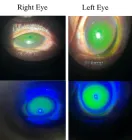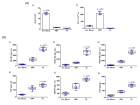About Mazandaran University of Medical Sciences
Mazandaran University of Medical Sciences
Articles by Mazandaran University of Medical Sciences
Epidemiologic aspects and risk factors associated with infertility in women undergoing assisted reproductive technology (ART) in north of Iran
Published on: 20th January, 2021
OCLC Number/Unique Identifier: 8897953759
Objective: This study aimed to investigating of the epidemiological aspects of infertility and related risk factors in infertile women.
Materials and methods: This cross-sectional study, carried out on 330 infertile women referred to two infertility treatment center of Imam Khomeini Hospital and Mother center in Sari, Iran, from April 2015 to March 2017.
Results: 54.5% of these women were in the age of 30-39 years, infertility duration in 55.2% was 1-5 years, Body mass index (BMI) in 44.5% of samples was 26-30 kg/m2, 54.5% had diploma and associate degree. 63.6% lived in urban areas. 74.5 % of patients reported primary infertility. History of polycystic ovarian syndrome (PCOs) and pelvic inflammatory disease (PID) and poor ovarian reserve were the most common causes and risk factors for the infertility with prevalence 19.42%, 16.81% and 13.91%, respectively. Most underlying disease was thyroid disorders (54.5%). There was found statistically significant relationship between residents of urban areas and infertility duration, endometriosis and educational levels, miscarriage with thyroid. Data analysis performed using IBM SPSS 21 software and Chi-Square test (p < 0.05).
Conclusion: The results showed that women with infertility in north of Iran were more likely to be older, less educated, and also had overweight. They are more possible to have ovarian disorders. In these area, thyroid disease more common like Iodine deficient regions. Future research should be focused on the reasons why majority of women don’t seek treatment for the underline significant diseases that may be effects on ovarian function and fertility.
Cervical choriocarcinoma in a post-menopause woman: Case report and review of literature
Published on: 31st January, 2022
OCLC Number/Unique Identifier: 9406534015
Background: Cervical choriocarcinoma is a malignant trophoblastic neoplasm that arises from pluripotent gonadal germ cells. Various manifestations are expected including vaginal bleeding and symptoms related to metastasis. Here, we report a case of primary choriocarcinoma in a post-menopausal woman. Case presentation: A 67-year-old woman presented with vaginal bleeding and lower abdominal pain. Ultrasound and laboratory results were normal except for a β-hCG titer of 14850 IU/L. Hysteroscopy revealed a polyp in the posterior wall of the cervix. hysterectomy and bilateral salpingo-oophorectomy were performed due to suspected choriocarcinoma. The β-hCG titer decreased immediately after surgery. However, the β-hCG titer increased again one month after surgery and treatment was continued with weekly methotrexate administration. Conclusion: Manifestations such as vaginal bleeding is very important in post-menopausal women. Although there are no specific guidelines for the treatment of choriocarcinoma in these patients, hysterectomy following chemotherapy based on response to treatment and β-hCG titration is favorable.
Investigation of Malpractice Claims Concerning Orthopedic Surgeons in Sari, North of Iran, 2015-2020
Published on: 17th October, 2023
Introduction: Treatment failure and claims against physicians may have many negative consequences. Orthopedic surgeons have always been among the most used specialists. Therefore, the investigation of causes and the process of these claims can help reduce the negative effects of medical malpractice on physicians and society.Materials and methods: This retrospective study investigated all medical orthopedic negligence cases in Sari, Iran, from March 2015 to March 2020. Data were collected using a researcher-made checklist and analyzed in SPSS software (V-21).Results: Out of 57 finalized cases investigated in this study, surgeons were found liable in 23 (40%) cases. The mean ± SD age of patients was 41 ± 19.3. Moreover, the level of education had a positive correlation with the surgeon’s liability. The most common cause of complaint was reduced Range of motion (ROM) and the most common type of complained surgery was “open reduction & internal fixation” (ORIF). None of the surgeons were found liable due to surgical site infection or device failure. The mean ± SD time for the file processing was 11.1 ± 10.1 months. The mean indemnity payment was 320 million Iranian Rials (9.7% of indemnity for death in Iran).Conclusion: The most effective way to reduce medical complaint cases is to increase the knowledge and skill levels of physicians. The lack of a blinded arbitration system in both organizations could lead to bias in the case assessment process. Moreover, considering the long processing time of the claims, it is recommended that new technologies should be used to reduce the time and increase the accuracy of the final verdict. The absence of a ‘no-fault’ compensation program is a significant flaw in Iran violating patients’ rights. Also, more studies are needed to evaluate justice and equality in Iranian medical commissions.

If you are already a member of our network and need to keep track of any developments regarding a question you have already submitted, click "take me to my Query."

















































































































































